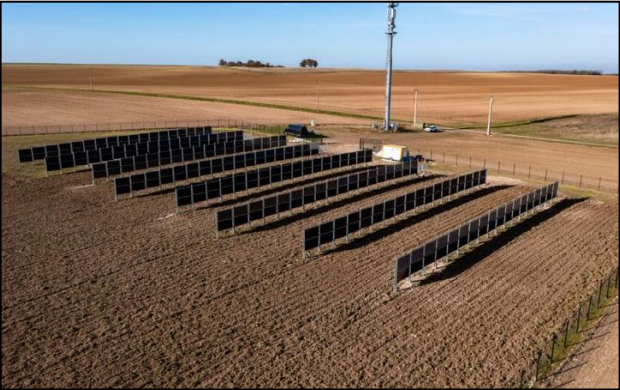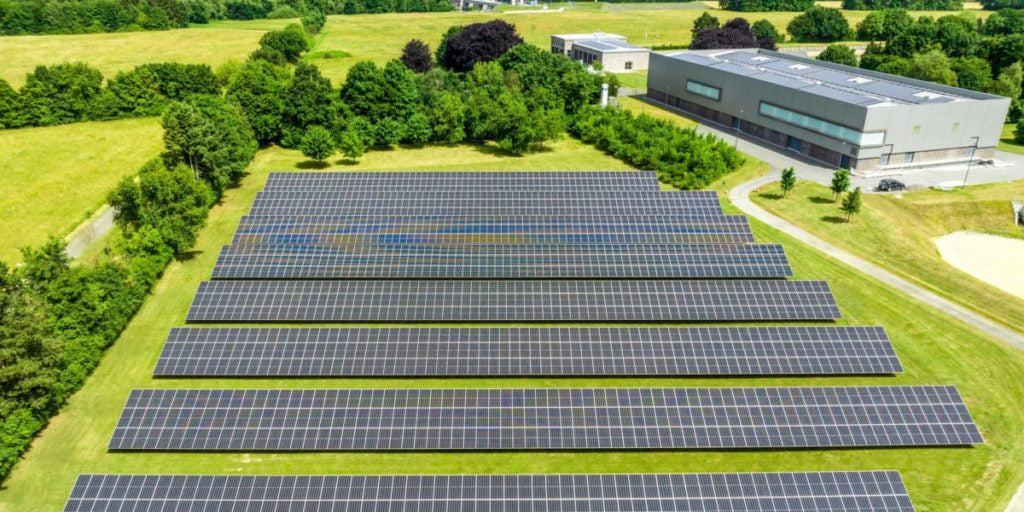https://www.pv-magazine.com/2022/08/17/metal-roofing-for-solar-pv/
Metal roofing for solar PV

Image: S-5!
From pv magazine USA
Within the past four decades, well over 2 billion square feet of metal roofing has been installed in the United States each year. That number continues to grow, and it’s more than any other roof type except asphalt shingle.
The roots and technology of metal as a cladding material date back more than 3,000 years. It has always been coveted as a premium roofing option but, until more recent history, has been handicapped by higher initial costs than the alternatives. Beginning in the mid-1800s and continuing to the present day, production technologies and the use of aluminum and coated steel sheeting began to narrow the premium price chasm. Now it competes with other premium roof materials but lasts two to four times as long.
Today’s trends point toward evaluating the long-term costs of owning a roof, as landfills are overburdened with former building components discarded due to shortsighted budget-conscious building objectives. The life-cycle costs and environmental appeal of metal truly offer many advantages. As a result, metal is becoming the roofing material of choice for both commercial and residential applications.
Service life
Metal roofing is known for its durability, sustainability and versatility and is increasing in popularity in the solar marketplace. The metal roof is the ideal host for mounting PV, as it is the only roof type with a service life that actually exceeds the service life of a solar PV system.
In the commercial/industrial market sector, the field/lab study published by the Metal Construction Association indicates that the service life of (standing seam) coated steel is in the range of 70 years. Most alternative roofing systems will expire long before the life of the PV system. This leads to costly disassembly of the PV array, re-roofing and re-assembly.
The service life of solar PV is between 28 and 37 years with an average at 32.5 years, according to a Berkeley study. Aside from metal, there are no other roof types that measure up to that without requiring replacement. High-end slate or tile may be the only exception, but it comes with a high price tag and is also much heavier (5 to 8 psf vs. 1.5). Mounting solar to tile or slate is a bit complex and very tricky to do without breakage so the cost is also much higher than mounting to metal.
Going ‘rail-less'
It is easier and less expensive to mount solar to a metal roof than any other roof type. The uniqueness of metal roofing is that the structural ribs or seams can be used as inherent (and cost-free) “rails” for mounting solar PV via reliable mechanical attachments, so the need for a traditional rail system is eliminated.
Direct attachment of solar modules to a metal roof can be accomplished with fewer components and lightweight materials, resulting in better load distribution and zero penetration, which preserves both the integrity of the roof and the roof manufacturer’s warranty.
Because there are no rails, the material required for a mounting system is reduced by weight (up to 85%) and savings on hard goods (up to 35%). The key to labor savings (30% to 50%) is the simplicity of rail-less attachment: requiring 65% to 75% fewer components, roof clamps are aligned and installed as modules are installed “on the fly.”
Finally, shipping long lengths of rail to project sites and transporting them up to a rooftop is costly and often a logistical nightmare. With rail-less attachments, shipping costs for the mounting system can be 60% lower than railed mounting systems, with fewer logistical hassles transporting the product to distribution, then the site, and then within the site and onto the roof. A traditional rail system of 750 kW would normally require a semi-truck to transport; a rail-less attachment solution could fit in a short-bed pickup truck.
Whether railed or rail-less, the simplicity and cost savings of mounting to a metal roof are significant, and the future need of roof replacement is avoided.
Popular content
Metal roofing is the most sustainable roof type (at an 85% recycle rate, steel is one of the most recycled construction materials available). By installing solar on metal roofs with lower material, labor and shipping costs, the rail-less attachment solution is proving to be a “green” innovation in both the solar and roofing industries.
Recyclable metal roofs have a demonstrated service life of several times that of any other roof type and are never destined for a landfill. Therefore, solar metal roof attachments enable installation on most aged roofs without a roof replacement. Production of rail-less systems saves an estimated 90% of the energy used to produce rail mountings and 85% of carbon emissions in transportation.
Lifetime ROI
Once the decision is made to install solar, often a new roof is required. Metal roofing has become a driver for roof type selection in many cases because not only is a metal/solar roof system less expensive upfront than other roof system combinations, but it also leads to improvements in the lifetime return on investment (ROI) of the system. Therefore, the PV array and the roof should be regarded as a single asset.
When computing ROI within the solar pro forma, inverter replacement is usually factored in at about year 15 – but what about the cost of roof replacement? The solar array has to be totally dismantled and then re-installed on the replacement roof. Often, even the initial cost of the solar + metal roof is less than solar and other roof-type alternatives. Factor in roof replacement and the cost advantages become grossly magnified.
A number of exorbitant expenses associated with completing a PV system re-roof for a traditional (non-metal) roof could include: removing the solar modules; removing the mounting and racking system; de-commissioning the system during the reroof; re-roofing; re-installing the PV system; re-commissioning the system; the potential for damaged components during this process; possibly needing new wiring and loss of power production during downtime.
With metal, you can avoid roof replacement due to its long service life. The roof will still be going strong long after the service life of the solar array has expired.
With the cost of solar decreasing significantly over the last decade, in addition to federal and local incentives as well as public policy mandates driving the popularity of solar, the breakeven and ROI improves every year – evident even more with solar on metal roofs because of its lower installation costs, so it makes even greater financial sense.
Metal is the most solar-friendly roof available and the PV contractor should know about it. Metal roofing is attractive, durable, non-flammable and requires almost no maintenance. The “buy-it-cheap and fix-it-later” mentality has steadily diminished over the last few decades and more building owners are choosing metal than ever before.
The growing demand for more durable and environmentally-friendly construction materials, as well as methods that reduce maintenance and have longer service lives, is on the rise―evident by statistics clearly indicating that metal has a much larger share of replacement roofing than it does in new roofing within the residential market.
Solar contractors should know about roofing alternatives and their service lives to bring added value to their customers. The long-term costs of both the roof and solar PV should be evaluated as a single system. Advising the mounting of a solar array with a 30-year plus life on a TPO or asphalt shingle roof with a 15-year life is a bit like mounting a Ferrari engine on a Mini-Cooper chassis. Who would do that?
For information, videos and webinars on this topic, please visit www.s-5.com and learn more about the key factors to consider when mounting solar on your metal roof.
By Rob Haddock
This content is protected by copyright and may not be reused. If you want to cooperate with us and would like to reuse some of our content, please contact: editors@pv-magazine.com.



